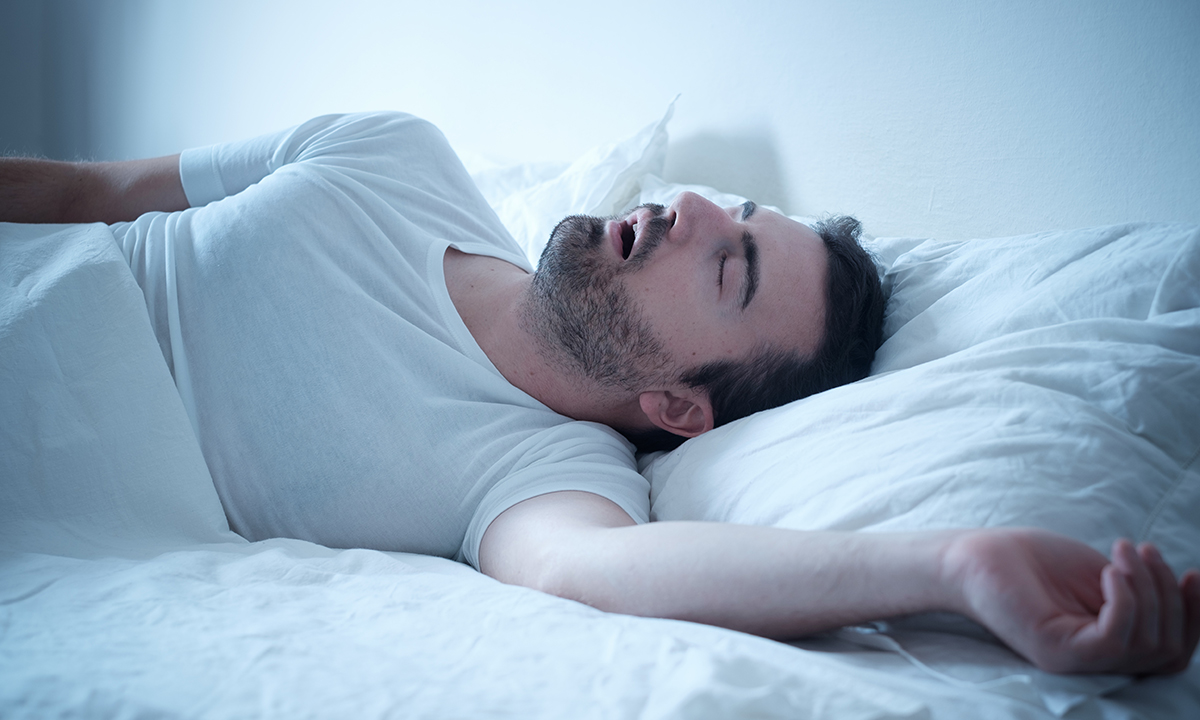THE dream world is a strange and often violent place. It’s just as well that while we’re inhabiting it, we’re in a state of atonia, in which our brain paralyses our muscles and we can’t respond physically – otherwise, we’d all be thrashing about in our beds every night fighting monsters.
But for people with rapid eye movement (REM) sleep behaviour disorder (RBD), a condition characterised by loss of normal atonia while in REM sleep, that’s exactly what happens. And it can be dangerous.
“I’ve had patients who have broken their arms during an episode, or given their bed partners black eyes or broken teeth,” Professor Ron Grunstein, professor of Sleep Medicine at Sydney’s Woolcock Institute of Medical Research, told MJA InSight. “I even had one patient, who was a former rugby league player, who would dream he was playing and he’d grab his wife’s head and try and pass it to a teammate.”
RBD is the subject of a Narrative Review in the MJA, penned by Dr Elie Matar and Professor Simon Lewis, both from the Brain and Mind Centre at the University of Sydney and the Royal Prince Alfred Hospital.
Idiopathic RBD affects up to 2% of the population and is not to be confused with the more common non-REM parasomnias, such as sleepwalking or talking in your sleep. During RBD episodes, the most common behaviours include punching, kicking and falling out of bed, as well as screaming and moaning.
While the symptoms of RBD itself can be treated, usually with clonazepam or melatonin, the condition comes with a deadly and as yet untreatable consequence. Around 20 years ago, it was discovered that almost all patients with idiopathic RBD will eventually develop one of three neurodegenerative diseases: Parkinson’s disease, dementia with Lewy bodies, or the much rarer multiple system atrophy.
In an exclusive podcast for MJA InSight, co-author Professor Lewis said the three diseases shared a common pathology.
“When you look at brain cells in a microscope, these diseases are all characterised by inclusions of synuclein protein which is tangled. The number of patients with these diseases who also have RBD is very high. And when studies have been done on patients confirmed to have RBD in life, when you do the [autopsy], over 95% will have one of those synuclein-based diseases. So, it’s a very strong relationship.”
RBD can be screened using a simple question: “Have you ever been told, or suspected yourself, that you seem to ‘act out your dreams’ while asleep (for example, punching, flailing your arms in the air, making running movements etc)?”
A “yes” answer to this question should lead to a referral to a sleep specialist, who will do a sleep study, and then eventually to a neurologist.
“Even if the history is pretty clear, you really want to rule out anything else, given the consequences of the diagnosis,” said Professor Grunstein. “Sometimes people with sleep apnoea can present with a dream-enacting behaviour that goes away when the sleep apnoea is treated with continuous positive airway pressure. And some antidepressants can also mimic RBD. Again, the symptoms may go away when you change the antidepressant.”
But once those possibilities have been excluded, idiopathic RBD is diagnosed. The link with neurodegenerative disease generally doesn’t come as a surprise to the patient, Professor Grunstein said.
“These days when people have dream-enacting behaviour, they get onto “Dr Google” and they come to me and say they’ve read about the association, so they already have an idea of what I’m going to say. But I do tell them there’s a percentage of patients who don’t develop one of the synucleinopathies, or only develop it after a very long time.”
Indeed, time to transition varies wildly, from around 3 years after diagnosis of RBD to 15 years and beyond.
“Studies show that after 15 years of follow-up, around 80% of people with idiopathic RBD will have ended up with synuclein disease. And it’s starting to look like everybody gets one of these diseases eventually, if they live long enough,” commented Professor Lewis.
He said that if RBD is bundled with other risks for synucleinopathies, such as losing sense of smell, poor colour discrimination and some physical symptoms, the risk of transitioning 3 years after diagnosis is around 55%.
Given that there are no reliable disease-modifying therapies for Parkinson’s or dementia with Lewy bodies, a diagnosis of RBD can be devastating.
“You have to have the conversation. You have to tell the patient that in any individual case we’re not sure if you’re going to get the disease, when it will be or what type, but we’re convinced there’s a risk. At the same time, there are positive things you can do, there’s no harm in taking up exercise, physiotherapy, speech therapy or brain training. So there are some positives we can say to our patients.”
Professor Lewis said that a study published in The Lancet in August 2017 suggested that the diabetes drug exenatide may have some disease-modifying function in Parkinson’s disease. The authors concluded that exenatide represented “a major new avenue for investigation in Parkinson’s disease”.
Patients with RBD who have yet to show symptoms of a synuclein disease may be the best target for trialling possible disease-modifying therapies, Professor Lewis said, as they represented the earliest detectable stage of the pathology.
“We should be upbeat about these things. We don’t want hype, but we do want hope. I think if you’re a patient with RBD, you have to know it’s not all doom and gloom.”
To find a doctor, or a job, to use GP Desktop and Doctors’ Health, book and track your CPD, and buy textbooks and guidelines, visit doctorportal.

 more_vert
more_vert
Given RBD is prevalent among patients with Parkinson’s disease, Lewy body dementia and multiple system atrophy, is it reasonable to consider clonazepam or melatonin for those who are unusually restless/agitated during sleep?